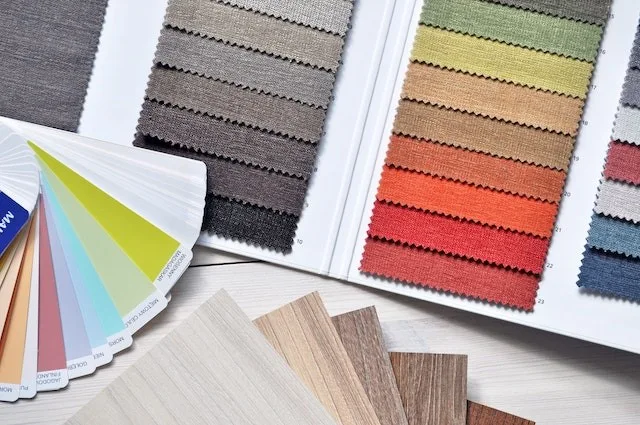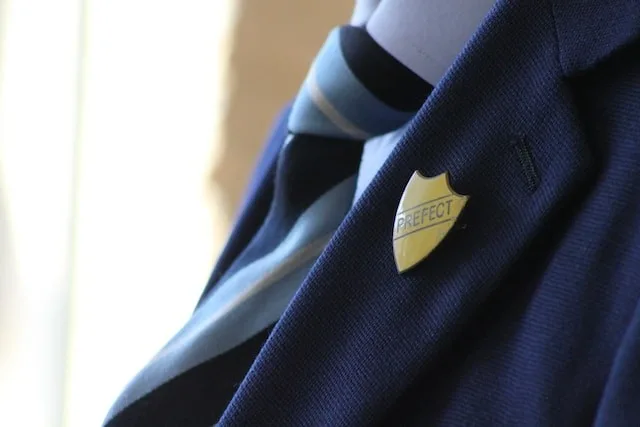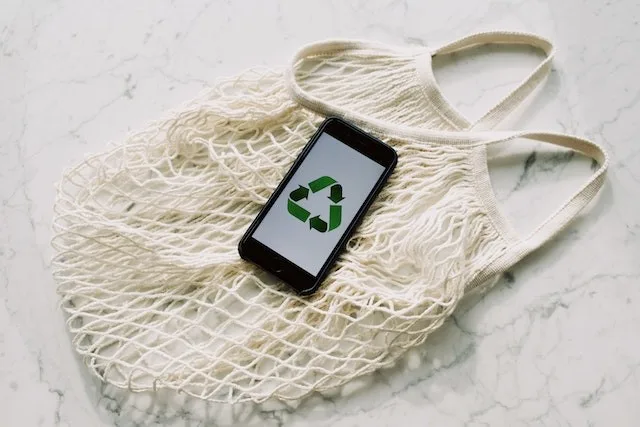Table of Contents
Introduction.
The power of a well-designed high school uniform lies in its ability to instill confidence and foster a positive learning environment for teenage students.
I am Mohammed Ibrahim Anwar, leading an organization that was started in 1947. I have personally helped this glorious textile and apparel industry since 1997, working with principals and school top-level management authorities helping and guiding them on every detail of the school uniform designs.
This has allowed me to provide a comprehensive view of our products, ensuring their quality and meeting the needs of our customers. For a detailed view of my background, you can check out the About Us page on our website. It provides information about my years of experience.
The main objective of this study is to explore the complex aspects of high school uniforms analyzing the impact of comfort and practicality in their design. It explores the significance of infusing school values into the aesthetics of these uniforms, ensuring they reflect the core principles and ethos of the educational institution.

Choosing Fabrics and Colors: The Palette of High School Uniform Design
Fabric Durability: Ensuring Longevity
One crucial aspect to consider is fabric durability. Students, are constantly on the move between classes, the library, and the corridors, all while wearing their school uniform. This group of students is always on the go. Their class uniforms need to withstand the daily wear and tear of the students. Opting for fabrics that are sturdy and long-lasting ensures that the uniforms can endure the rigors of high school life. Some durable fabric options include:
- Polyester-cotton blends are commonly used for school uniforms because they offer a balance between comfort and durability.
- Twill weaves: Known for their strength, twill fabrics are resistant to abrasions, making them an ideal choice for school uniforms.
Color Psychology: Setting the Tone
Color plays a significant role in shaping our emotions and perceptions, even when it comes to school uniforms. When selecting hues for high school uniforms, it’s essential to consider color psychology. Different colors evoke distinct feelings and moods, which can impact students’ mindsets during their academic journey. Here are a few examples:
- White: Symbolizes purity and cleanliness.
- Multi-color options: Vibrant combinations can promote creativity and energy.
Climate Considerations: Adapting to Seasons
High schools often experience varying climates throughout the year. To ensure students’ comfort, it’s important to explore different fabric options suitable for different seasons. For warmer climates:
- Lightweight cotton blends allow breathability.
- Moisture-wicking fabrics keep students cool during physical activities.
In colder regions:
- Wool blends provide insulation against chilly temperatures.
- Fleece-lined materials offer warmth without sacrificing mobility.
Branding Cohesion: Coordinating Colors
In addition to individual student expression, high school uniforms often serve as a representation of the institution’s brand identity. Color coordination within a school’s branding helps maintain consistency across various platforms such as sports teams or promotional materials.
By carefully selecting uniform colors that align with the school’s logo or overall visual identity, a cohesive and recognizable brand image can be established. This fosters a sense of pride and unity among students.

Beyond the Logo: Personalized Accessories in High School Uniform
Personalizing accessories can be a fun way for high school students to express their individuality while still adhering to the school uniform policy. While the school logo is an important symbol of unity and pride, there are ways to go beyond just the logo and add a personal touch to accessories.
One popular option is to customize backpacks or tote bags with patches or pins that reflect the student’s interests or hobbies. This could include anything from sports teams, musical bands, or even their favorite quotes.
Another option is to personalize accessories such as lanyards or keychains with charms or initials. Overall, allowing for personalized accessories within the school uniform policy can help students feel more comfortable and confident in expressing their individuality.
Benefits of Allowing Students to Accessorize their Uniforms
- Encourages self-expression and creativity among students
- Fosters a sense of individuality while maintaining uniformity
- Boosts student morale and confidence
Popular Personalized Accessories for High School Uniforms
- Pins: Students can showcase their interests, achievements, or affiliations through decorative pins.
- Patches: Colorful patches allow students to personalize their uniforms with unique designs or logos.
Balancing Individual Expression with Unity
- Implement guidelines to ensure accessories are appropriate and respectful.
- Encourage students to express themselves within reasonable boundaries.
- Promote a sense of unity by allowing accessories that represent school spirit or values.
Addressing Challenges Associated with Personalized Accessories
- Distraction: Ensure that accessories do not interfere with learning or create distractions in the classroom.
- Inequality: Prevent any form of discrimination arising from disparities in accessorization options.
- Safety concerns: Establish rules regarding the size and placement of accessories to avoid safety hazards.
While personalized accessories offer numerous benefits, challenges may arise. It is important for schools to address potential distractions caused by excessive accessorization and prevent any inequality among students based on their access to personalizing options. Safety concerns should be considered when establishing rules related to the size and placement of these accessories.

The Future of High School Uniforms: Sustainable and Stylish Solutions
Investigating eco-friendly materials for sustainable uniform production
As the world becomes more environmentally conscious, high schools are exploring new avenues to create sustainable uniforms. One way they are doing this is by investigating eco-friendly materials that can be used in uniform production. These materials include organic cotton, recycled polyester, hemp, and bamboo. By opting for these alternatives, schools can significantly reduce their carbon footprint and contribute to a more sustainable future.
Discussing innovative designs that prioritize both style and sustainability
Gone are the days when school uniforms were considered drab and outdated. Today, designers are focusing on creating innovative uniform designs that strike a balance between style and sustainability. These modern designs incorporate elements such as flattering cuts, vibrant colors, and unique patterns while still adhering to the school’s dress code policy. By embracing fashion-forward options, high schools can ensure that students feel confident in their uniforms while promoting sustainability.
Analyzing the potential cost savings associated with sustainable uniforms
Contrary to popular belief, sustainable uniforms can actually lead to cost savings for high schools in the long run. While the initial investment may be slightly higher due to eco-friendly materials. By implementing sustainable practices in uniform production, schools can also attract environmentally-conscious parents who may be willing to support their initiatives financially.
Parent-Student Collaboration: Navigating High School Uniform Choices
Encouraging open communication between parents, students, and schools regarding uniform preferences is essential. By fostering an environment where all parties can express their opinions, we can ensure that high school uniforms meet the needs and expectations of everyone involved.
Strategies for involving parents in decision-making processes related to uniforms are crucial. This collaborative approach empowers parents to have a say in what their teen students wear, promoting a sense of ownership and engagement. Some effective strategies include:
- Conducting surveys or polls to gather input from parents on uniform options
- Establishing parent committees or focus groups to discuss and provide feedback on proposed uniform changes
- Organizing town hall meetings or open forums where parents can voice their concerns and suggestions
Addressing common concerns raised by parents regarding high school uniforms is vital for building trust and understanding. By acknowledging these concerns, schools can work towards finding solutions that satisfy both the dress code policies and parental expectations. Common concerns include:
- Affordability: Exploring cost-effective options or implementing assistance programs for families with financial constraints
- Individuality: Considering personalized elements within the uniform guidelines, such as allowing students to choose accessories or variations within specified parameters
- Comfort: Ensuring that uniforms are designed with comfort in mind, taking into account factors like fabric quality and fit
Promoting a collaborative approach helps strike a balance between student satisfaction and adherence to dress code policies. By involving all stakeholders in decision-making processes, schools can create an inclusive environment that values student voices while maintaining a respectful learning atmosphere.
Conclusion and Key Takeaways
In conclusion, the design of high school uniforms goes beyond just fabrics and colors. It involves personalized accessories, sustainable solutions, and collaboration between parents and students. By carefully selecting fabrics and colors, schools can create a palette that represents their identity while ensuring comfort for students. Incorporating personalized accessories allows students to express their individuality within the uniform guidelines.
Looking towards the future, it is important to consider sustainable options for high school uniforms. By opting for eco-friendly materials and manufacturing processes, schools can contribute to a more environmentally conscious society while still maintaining style.
Moreover, involving parents and students in the decision-making process fosters a sense of ownership and collaboration that leads to greater satisfaction with uniform choices.
To make informed decisions about high school uniforms, consider factors such as fabric quality, durability, and comfort. Look for customizable options that allow personalization while adhering to school guidelines. Research sustainable brands that prioritize ethical production practices.
In conclusion, as someone who has years of experience in providing uniforms to students, I can confidently say that I am the perfect choice for you. I can offer excellent solutions to ensure that your students look great in their uniforms. If you are interested, please feel free to reach out to me at [email protected]. I look forward to developing a strong relationship with you.
FAQs
Can I choose my own fabric for the high school uniform?
Yes! Some schools offer the option for students or parents to choose their own fabric from a selection provided by the school or approved vendors. This allows for customization while still maintaining consistency within the overall design.
Are there any restrictions on personalized accessories?
While many schools encourage individual expression through personalized accessories such as pins or patches, it is important to check with your specific school’s guidelines. Some schools may have restrictions on size or content of these accessories to maintain a professional appearance.
How can I ensure sustainability in high school uniforms?
Look for brands that prioritize sustainability in their manufacturing processes by using eco-friendly materials such as organic cotton or recycled polyester. Consider supporting brands that have certifications like Fair Trade or GOTS (Global Organic Textile Standard) which ensure ethical production practices.
What if I don’t agree with the chosen high school uniform?
It is important to voice your concerns and engage in open communication with school administration. They may be willing to consider alternative options or provide explanations for their choices. Remember, collaboration and understanding are key in finding a resolution.
Can I suggest changes to the high school uniform design?
Absolutely! Schools often value input from students and parents. Consider gathering support from fellow students or organizing a meeting with school administrators to discuss your ideas and suggestions. Your feedback can make a difference in shaping the future of the uniform design.



Pingback: Unique Clothing Identity For School Uniform For Girls & Boys
Pingback: Stand Out With Style: Embrace Diversity Of Types Of Uniforms